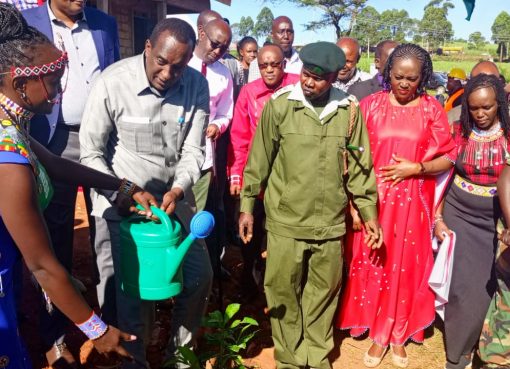The Ministry of Tourism, Wildlife and Heritage has launched the National Wildlife Research Agenda (NWRA) to guide and coordinate all activities in research on wildlife for the next four years.
Speaking during the launch of the document at Wildlife Research and Training Institute (WRTI) in Naivasha on Monday, Tourism Cabinet Secretary (CS) Ms. Peninah Malonza said the NWRA document was timely and will go a long way in guiding, coordinating and giving impetus to all the activities of all stakeholders while carrying research in wildlife.
The CS said it will also help to improve the provision of scientific, evidence-based information to support wildlife conservation, management decision-making and policy formulation while at the same time addressing present and emerging wildlife conservation and management challenges in Kenya.
“Despite research on wild animals and their habitats in Kenya having been going on since the establishment of the first Protected Area (PA), the Nairobi National Park in 1946, it has been uncoordinated with limited access and sharing of data and information. It has often been disconnected from the prevailing needs of wildlife conservation and management in the Country,” Malonza said.
She noted the agenda has identified seven (7) priority thematic areas for wildlife research that will provide an all-encompassing science-driven framework to support the implementation of the National Wildlife Strategy 2030, the WRTI Strategic Plan 2022-2027, the KWS Strategic Plan 2019-2024, relevant Multilateral Environmental Agreements (MEAs) and the Wildlife Conservation and Management Act, 2013.
The thematic areas include; wildlife species population dynamics where the researches will establish and update the status, trends, and distribution of wildlife, Wildlife Habitat dynamics which seeks to maintain the integrity of wildlife habitat in conservation areas and its management, wildlife health where the researches will help safeguard wildlife through early prevention and early detection and management of diseases and Natural Resources Governance, to help improve security rights and sharing of power between communities and diversity.
Other thematic areas of researches include; researches covering specimens and inventions in wildlife, researches in Climate change which seeks to look at effects of climate change on wildlife and propose adaptation plans by both the national and county governments in the affected counties and lastly, wildlife resource information management for posterity.
Malonza has directed the WRTI Institute in Naivasha to establish the national wildlife data portal to facilitate consolidation of wildlife data across the country and its synthesis to inform science driven decision -making and policy formulation in order for the proposals in the agenda to be effective.
She revealed that the Government has already provided some seed money towards this initiative and welcomes support from partners to realize this goal. Further, Malonza advised the Institute needs to make the permitting of wildlife research facilitative by adopting online platforms.

The CS reiterated the Government`s commitment to support the implementation of this document and observed the implementation of the research agenda will require strategic partnerships and stakeholders’ collaborations to ensure proper stewardship, science-based decision making, and adaptive management in the wildlife sector
On the issue of the drought that have ravaged the country for five consecutive seasons, Ms. Malonza announced that they will launching a report on the same next month.
Parts of the country have experienced five consecutive seasons with inadequate rain in the past two years, which severely affected people and animals, including livestock. The worst-affected ecosystems are home to some of Kenya’s most-visited national parks, reserves and conservancies, including the Amboseli, Tsavo and Laikipia – Samburu areas.
It’s estimated that more than five million Kenyans were affected by the drought in more than 24 counties and more that 2.4 million livestock and wildlife killed by the drought.
Tourism in Kenya is the second-largest source of foreign exchange revenue, hot on the heels of the agriculture sector which earns Kenya about 70 per cent of her Gross Domestic Product (GDP)
According to data from the Ministry of Tourism released in March this year, Kenya international tourist arrivals in 2022 were 1,483,752 which represents 70.45 per cent increase as compared to 2021 arrivals of 870,465. The incoming earnings grew up to Sh. 268.09 billion compared to Sh. 146.51 billion in 2021 when Kenya was still in the jaws of Covid-19 pandemic, which is a growth of 83 per cent.
Kenya has been considered an attractive tourist destination for decades. With over two million tourists annually, the country has long since adapted to foreign guests and can offer not only breathtaking nature, but also all other amenities.
By Mabel Keya – Shikuku





